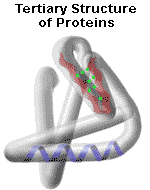Question
In: Chemistry
It is important to understand what an amino acid bond is, where at is located within...
It is important to understand what an amino acid bond is, where at is located within a protein. Why is this such as table bond and what the products if it's hydrolysis?
Solutions
Expert Solution
Amino acids play central roles both as building blocks
of proteins and as intermediates in metabolism. The 20 amino acids
that are found within proteins convey a vast array of chemical
versatility.  The precise amino
acid content, and the sequence of those amino acids, of a specific
protein, is determined by the sequence of the bases in the gene
that encodes that protein. The chemical properties of the amino
acids of proteins determine the biological activity of the protein.
Proteins not only catalyze all (or most) of the reactions in living
cells, they control virtually all cellular process. In addition,
proteins contain within their amino acid sequences the necessary
information to determine how that protein will fold into a three
dimensional structure, and the stability of the resulting
structure. The field of protein folding and stability has been a
critically important area of research for years, and remains today
one of the great unsolved mysteries. It is, however, being actively
investigated, and progress is being made every day.
The precise amino
acid content, and the sequence of those amino acids, of a specific
protein, is determined by the sequence of the bases in the gene
that encodes that protein. The chemical properties of the amino
acids of proteins determine the biological activity of the protein.
Proteins not only catalyze all (or most) of the reactions in living
cells, they control virtually all cellular process. In addition,
proteins contain within their amino acid sequences the necessary
information to determine how that protein will fold into a three
dimensional structure, and the stability of the resulting
structure. The field of protein folding and stability has been a
critically important area of research for years, and remains today
one of the great unsolved mysteries. It is, however, being actively
investigated, and progress is being made every day.
The 10 amino acids that we can produce are alanine, asparagine, aspartic acid, cysteine, glutamic acid, glutamine, glycine, proline, serine and tyrosine. Tyrosine is produced from phenylalanine, so if the diet is deficient in phenylalanine, tyrosine will be required as well. The essential amino acids are arginine (required for the young, but not for adults), histidine, isoleucine, leucine, lysine, methionine, phenylalanine, threonine, tryptophan, and valine. These amino acids are required in the diet. Plants, of course, must be able to make all the amino acids. Humans, on the other hand, do not have all the the enzymes required for the biosynthesis of all of the amino acids.
Related Solutions
9. What is an anticodon? Where are anticodons located? 10. What type of bond links amino...
Compare amino acid metabolism in plants with that in mammals, in terms of where the amino...
What is an amino acid? How many amino acids are there?
the peotide bond between two amino acid is a covalent bond. true or false? in a...
What do you think your 93rd amino acid is for this protein? the amino acid sequence...
What ions are important in the process of neural transmission. where is each located?
You are provided with the amino acid sequence of an important human protein that is suspected...
1. what is the 6th amino acid of human myoglobin? 2. what is the 11th amino...
The amino acid glutamic acid has the molecular formula C5H9NO4, and the amino acid isoleucine has...
So far we've learned about a few important cofactors involved with amino acid metabolism. What vitamin...
- 1. you want to buy your dream car which will cost you $5900. If you could...
- Determine the mass (in g) of Ca3(PO4)2 that is produced when 140 mL of a 8.48×10-2...
- Scenario 2: Mrs Fei Hong (Questions 8-13 refer to this scenario) On Sunday at 1000hrs, you...
- A tank contains a two-phase liquid–vapor mixture of Refrigerant 22 at 10 bar. The mass of...
- A sinusoidal voltage Δv = 42.5 sin(100t), where Δv is in volts and t is in...
- Kelly, a 45-year old female patient, is undergoing a breast biopsy. The surgeon has just injected...
- C Programming The score table will be printed by reading the match information made between the...
 queen_honey_blossom answered 1 year ago
queen_honey_blossom answered 1 year ago